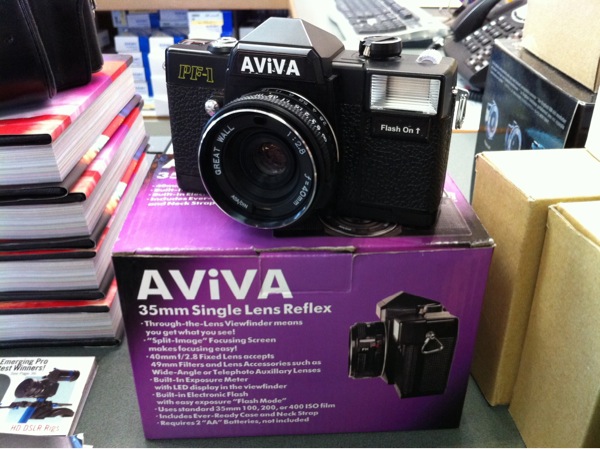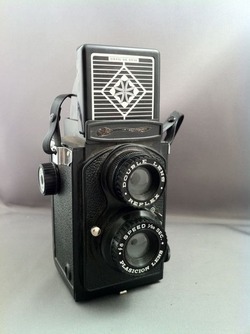Here are a few things people say about their first rolls of film taken with a lo-fi camera:
"The lab said my film was blank"
"Only a few of my photos came out"
"My pictures don't have that feeling that Holga (or Diana) pictures are supposed to have"
"Did they mess up my film?"
"What am I doing wrong?"
While the lo-fi Holga or Diana lens will add some interesting characteristics to your images, a certain essential ingredient must be added to each photo to make them work...your brain! When learning how to use your lo-fi camera, you must put a little thought into what you are doing. Once you get the hang of it, you won't need to think about it much, as the thought process becomes automatic.
One of the things you must be aware of is your film camera's limitations. A common comment I hear is that only a few photos came out. A mistake that I see often is that people try shooting in low light conditions. While digital cameras often get a usable image under these conditions, film is usually not sensitive enough to get an image under the same conditions. Lo-fi cameras like light, and lots of it. For now, shoot in good sunlight, or if shooting indoors, night or other low light conditions, use a flash unit.
What film are you using? Your choice of film will often make a difference. One thing to look for is a film with an ISO rating of 400. The ISO rating is a measure of how sensitive the film is to light. Slower films with a lower ISO rating (ISO160 or 200) are easier to find in your local drugstores, but they require more light to make a proper exposure. If you want good color saturation, a film like Kodak Portra or Fujifilm 400HD are good choices. I have a blog post about film here:
http://bit.ly/kWhichFilm
Next thing to think about, is how far away are you from your subject? If you are mostly shooting things that are far away from the camera (landscapes, or buildings that are in the distance), you aren't giving the lens much to work with. What I mean by that, is that the unique characteristics of the lo-fi lens give a sharp-blurry feel to the image, but the subject must be fairly close to your camera to make the differences more readily apparent. If you haven't tried it, get closer to your subject, and check your focus setting as you move in.
Another thing to consider, is what time of day you are shooting. If you are shooting around noon, when the sun is high, the light from the sun becomes flat, and the shadows are short and harsh. Try shooting in the late afternoon or early morning when the shadows become longer and the low raking sunlight will give an interesting texture to the subjects.
This is a lot to think about, but just a little awareness of the conditions you are shooting under, and few other things will give your photos that little extra bit of something that you are probably missing from your photos.
Make sure the camera settings are right for each photo. I use the acronym SAFE to remind me.
S - Shutter setting, for everyday outdoor shooting, the camera shutter setting should be on N.
A - Aperture, choose the appropriate aperture setting for the light conditions: Sunny or Cloudy (or Semi-Cloudy on the Diana). If you have a Diana, make sure it is not set to P, Pinhole. This setting will underexpose the film so it appears blank.
F - Focus, set the lens to the appropriate distance from your subject.
E - Expose! Trip the shutter and take the photo, advance the film.
Repeat as necessary.
I have how-to videos for Holga and Diana:
The video for Holga is done with a Holga 120, but the basics still apply to the Holga 135 and 135BC.
Shooting with Holga:
http://bit.ly/kShootHolga
The video for Diana is done with a Diana+, but the basics still apply to the Mini.
Shooting with Diana:
http://bit.ly/xShootDiana
The Holga video also has a couple of composition tips, so even if you have a Diana, you may want to take a look at it. It is also one of my newer videos. After some comments by viewers on my earlier videos, it includes the photo made with the Holga camera.
 Friday, May 20, 2011 at 8:20AM
Friday, May 20, 2011 at 8:20AM 
 kaiy |
kaiy |  4 Comments |
4 Comments |  35mm,
35mm,  Aviva,
Aviva,  Great Wall,
Great Wall,  Lomo,
Lomo,  Lomography,
Lomography,  SLR,
SLR,  cheap,
cheap,  lo-fi camera,
lo-fi camera,  manual operation,
manual operation,  photography,
photography,  plastic,
plastic,  toy camera in
toy camera in  Camera
Camera 


